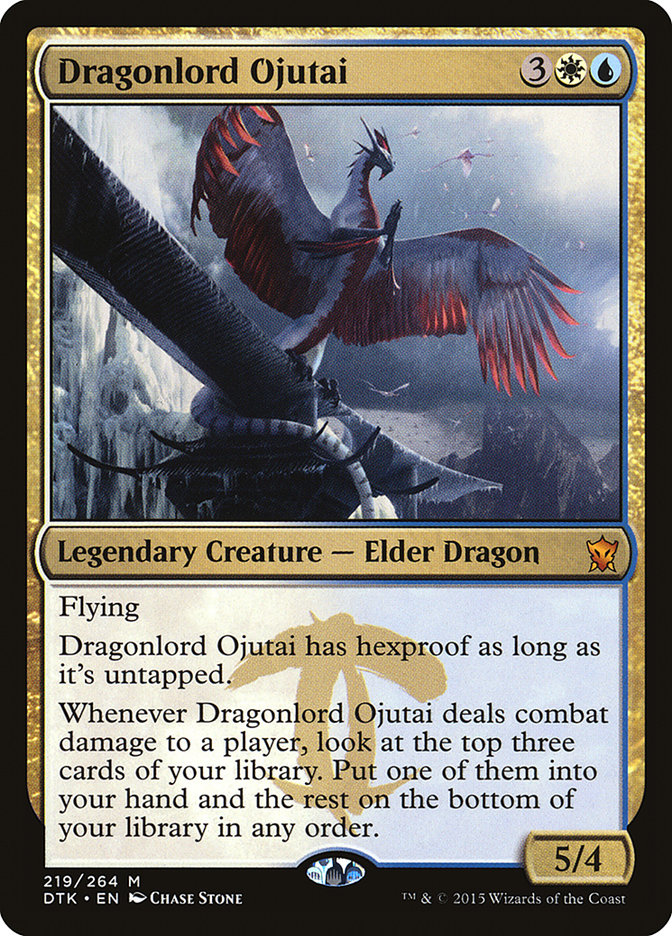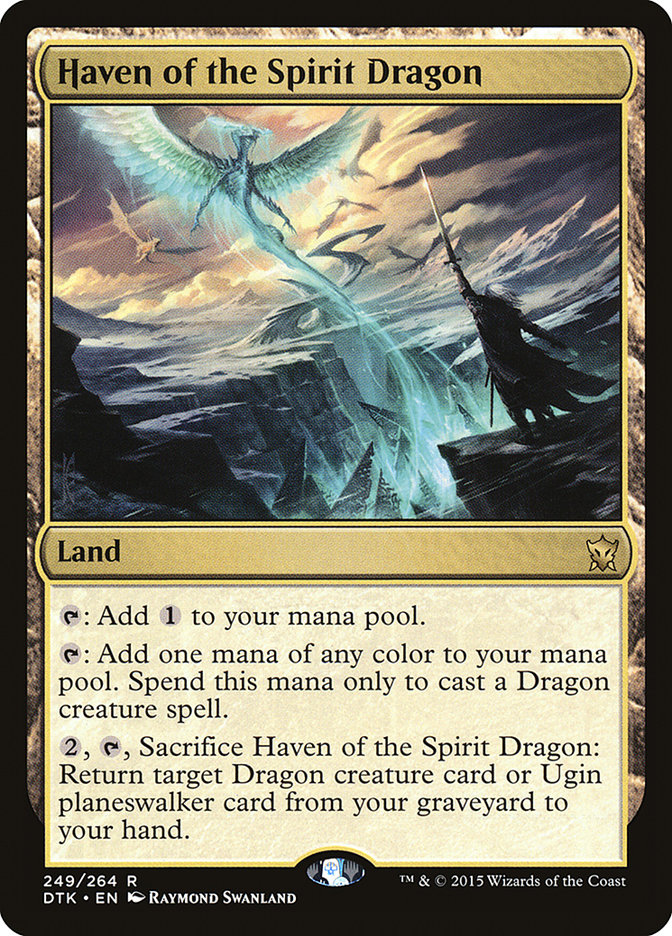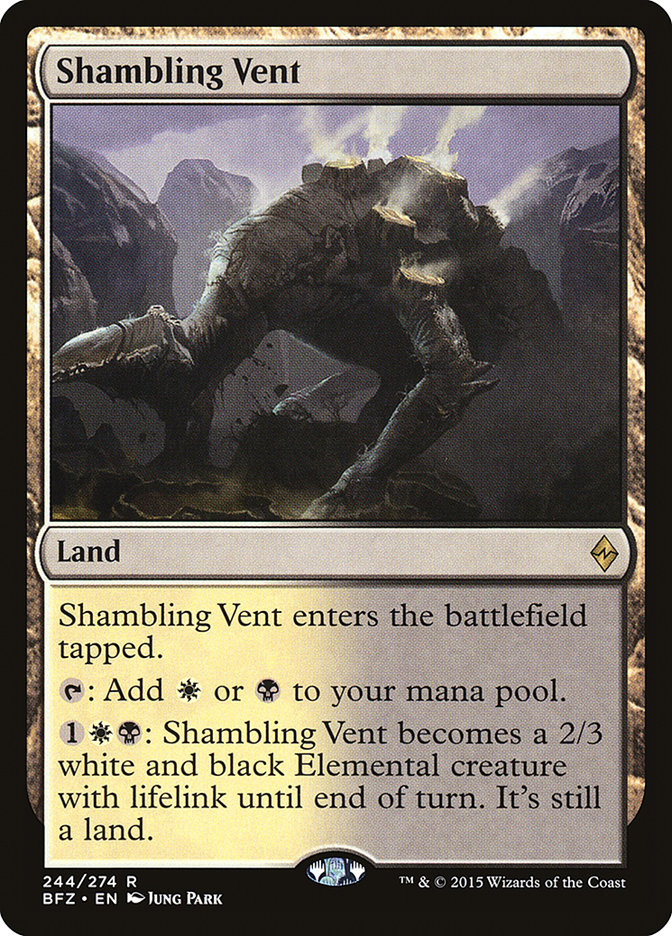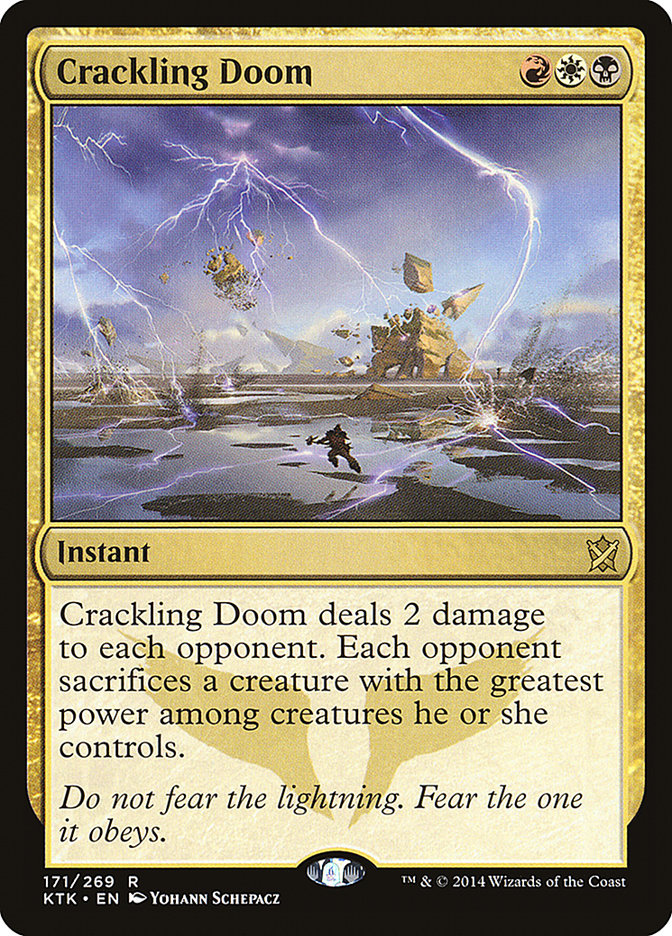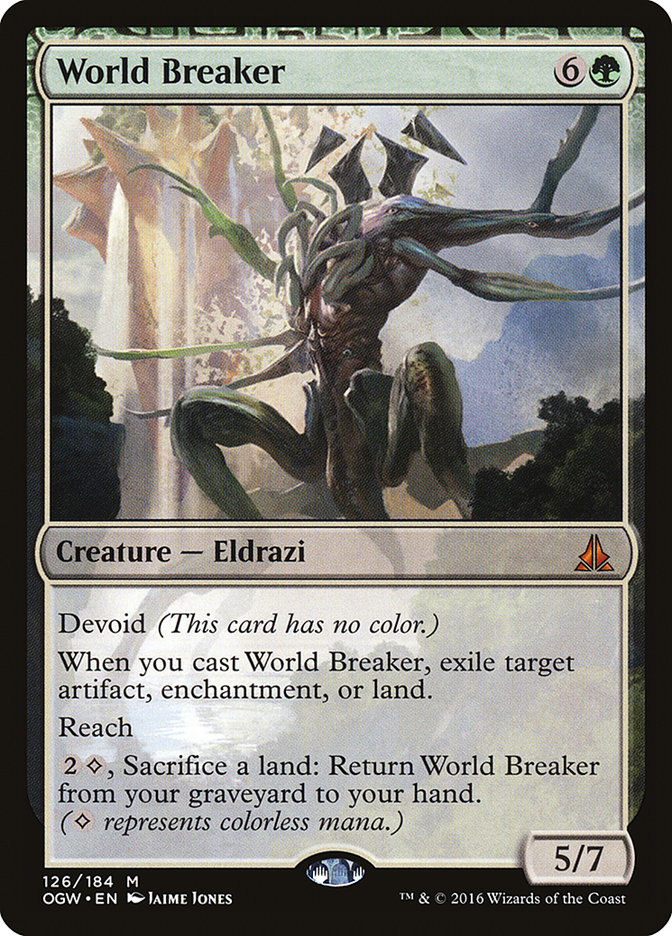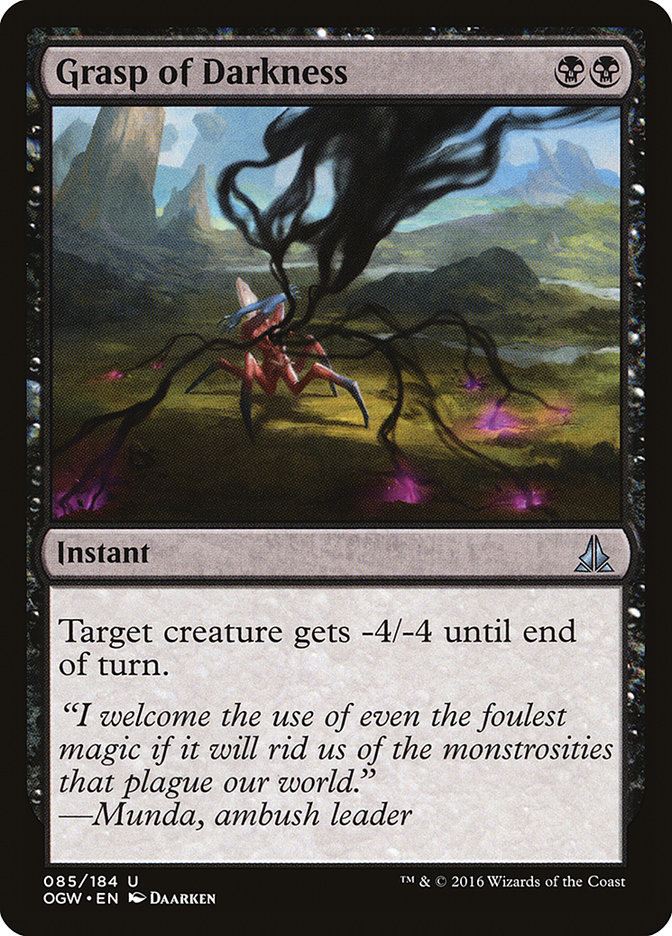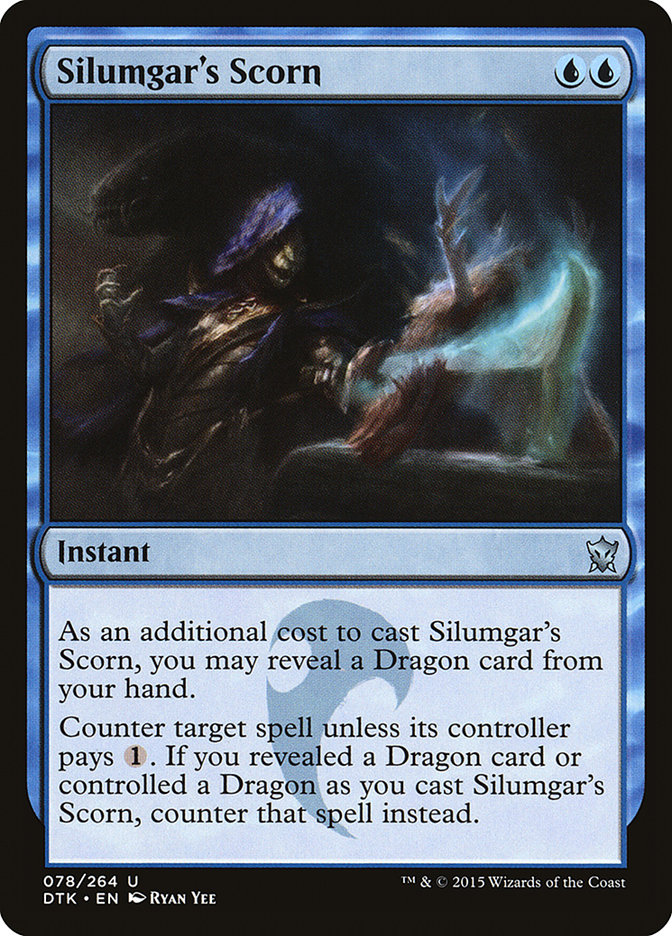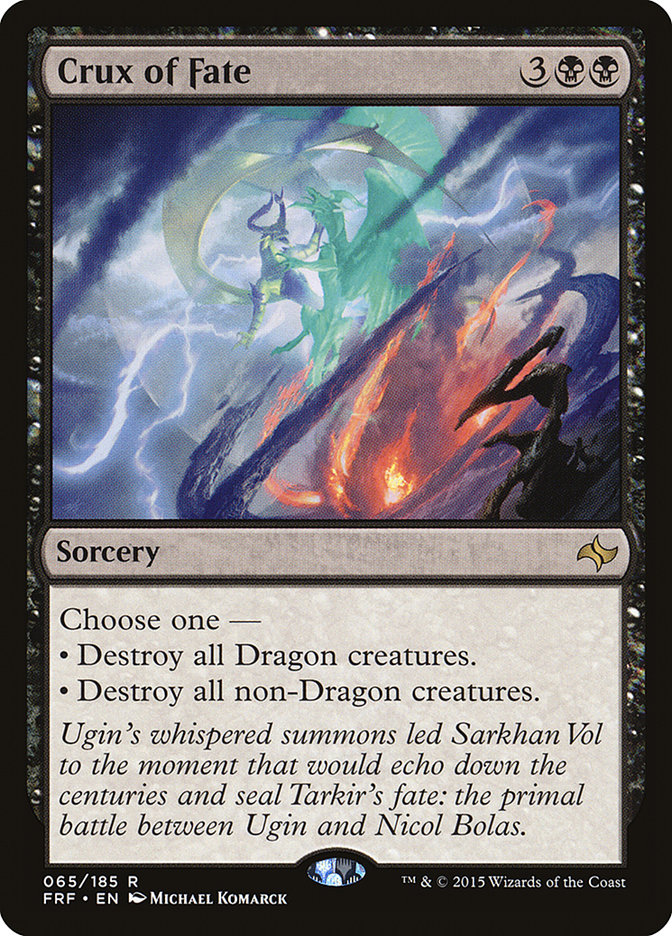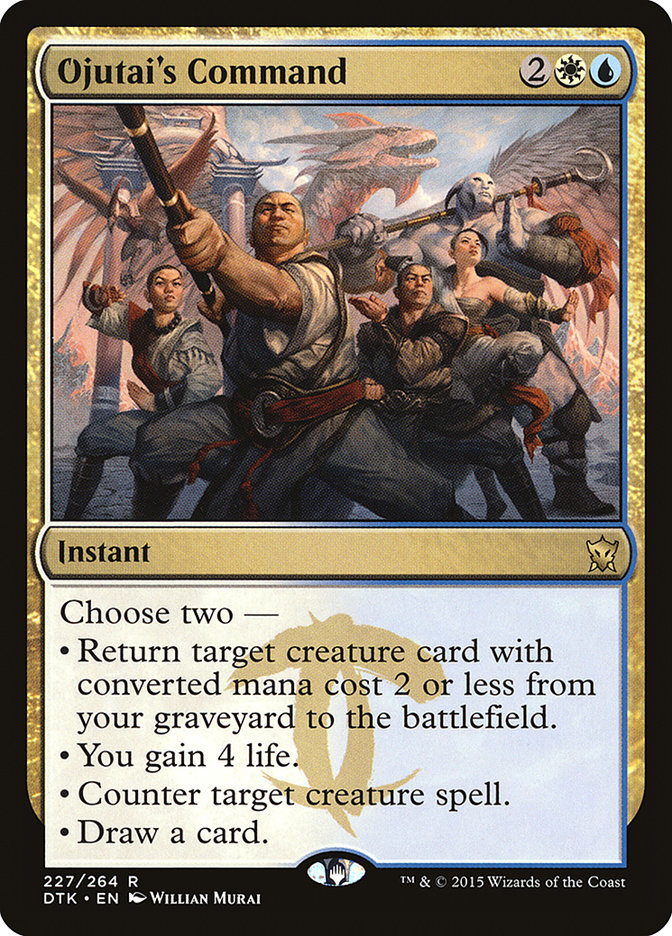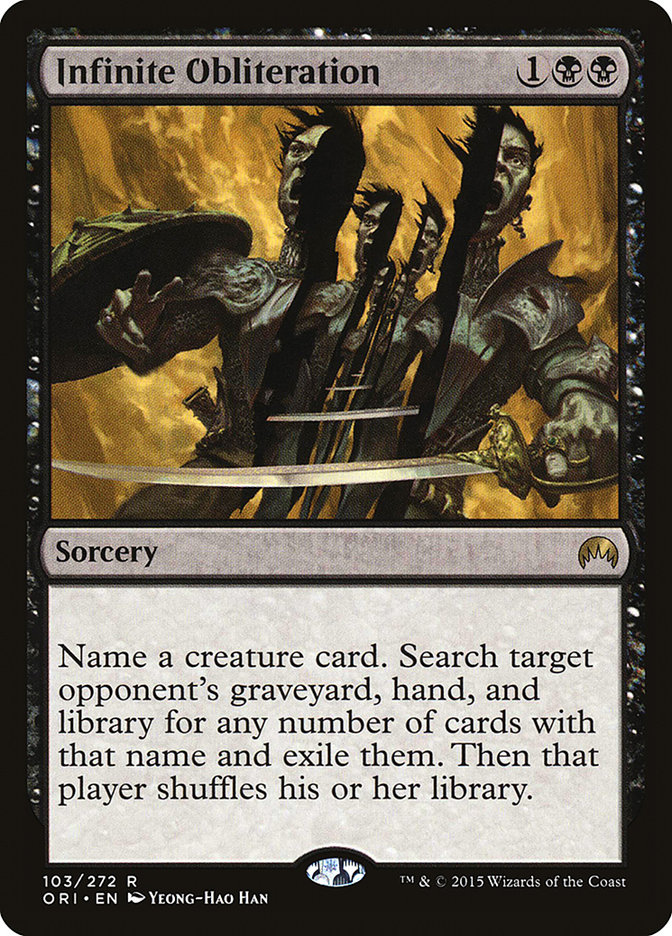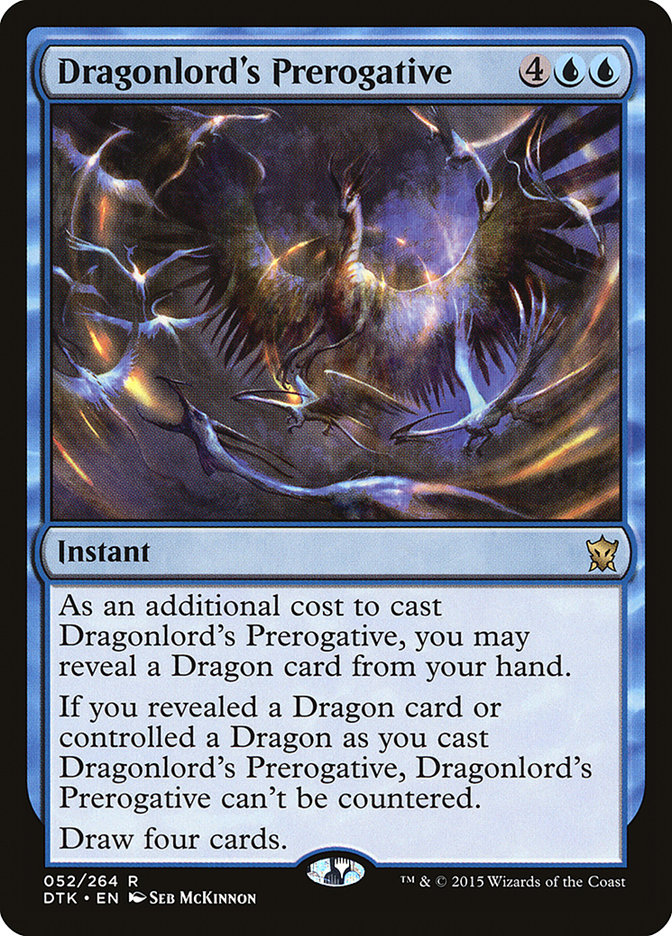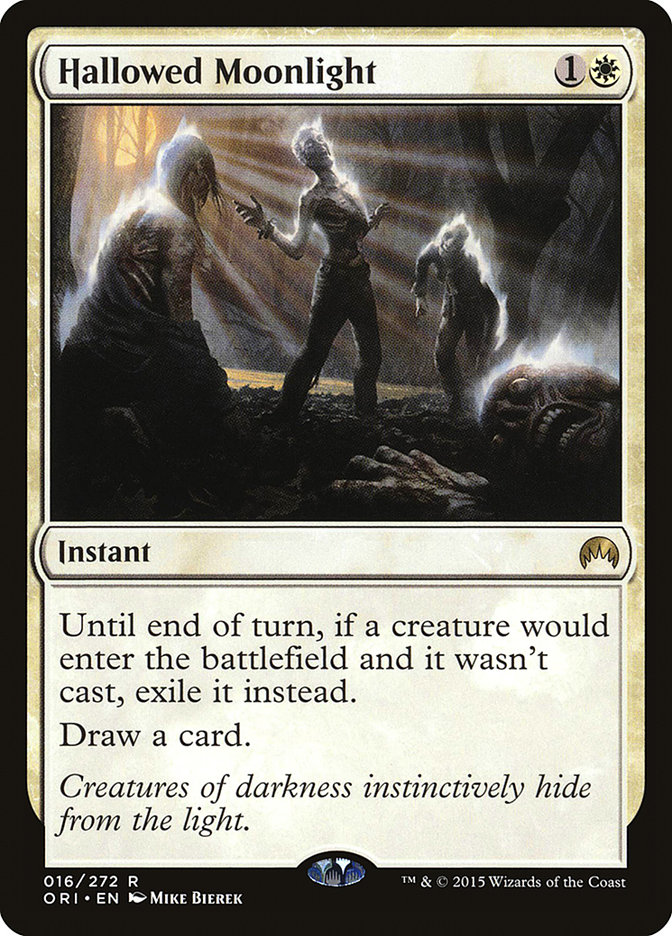Esper Control yielded me a nice chunk of change locally, a PPTQ win, and a superior Standard record in the Season Four Invitational. I also had a near-miss at one of the few SCG Tour® events I was able to attend. Esper Control has had all of the tools to keep a clean board while pumping out enough card advantage to never be in danger of losing the game.
The one true flaw of the deck is its inability to finish off an opponent swiftly, which puts you at a loss against decks with inevitability or the dreaded clock. One of those decks that has inevitability against Esper Control is the new Eldrazi archetype that we are experiencing in both Standard and Modern. The runner up of #SCGATL shows the true, raw power of Eldrazi and how lingering around with a control deck is not where we want to be going forward.
Creatures (17)
- 4 Leaf Gilder
- 4 Rattleclaw Mystic
- 3 Ulamog, the Ceaseless Hunger
- 1 Conduit of Ruin
- 1 Kozilek, the Great Distortion
- 4 Thought-Knot Seer
Planeswalkers (2)
Lands (25)
Spells (16)

I carved up the early incarnations of Eldrazi Ramp on the back of Infinite Obliteration and that is even more of a necessity for the near-future builds of control. We have to do a few things differently in this world of colorless threats. First, we have to speed up our clock. Looking at what’s available to us in Standard at the moment, the Dragonlords remain the fastest and most reliable way to close out games.
Without the power of Dragonlord Ojutai, we are doomed to a long and grueling match round after round.
Being the architect of most Esper strategies, I don’t have an issue finishing a match in time, but the feedback that you all provide me paints a much different picture. Dragons help destroy an opponent within a few turns with an added cost of sacrificed consistency. The conditional spells that make Esper Dragons great are quite the liability if drawn without their counterparts. That problem doesn’t exist in the world of planeswalkers, but we have to weigh the pros and cons carefully in order to make the right decision.
The second change in control theory moving forward is the spell suite that we have to choose. There are some accepted cards that are used in typical Esper Dragons lists that have to go. Esper Dragons is a deck I threw together prior to the Prerelease of Dragons of Tarkir, and it is still one of my most prized creations. The synergy between the win conditions, counterspells, and card draw is one of beauty, so it is my pleasure to jump back into the mix. I’m going to cover a few of my card choices in this article and explain the omission of a few stinkers that I’ve seen in some lists. The last evolution of Esper Dragons rests in the manabase. I did a complete overhaul after testing the typical manabases and not liking the results.
Creatures (10)
Lands (27)
Spells (23)

I have a few PPTQs and local tournaments coming up where I’ll put the list into more action, but last Sunday I was able to go undefeated in a lucrative local tournament. There are a few things I learned from that tournament that are vital for this deck’s success moving forward:
1. Haven of the Spirit Dragon is horrendous.
2. Shambling Vent is fantastic in any deck that can support it and should never be less than a three-of.
3. This deck punishes the current metagame that suffers from a lack of Crackling Doom.
In an effort to overhaul the manabase with a different version, I plugged in my old one from Esper Control for the most part. Both decks demand early double black and blue, so I assumed it would be a near-perfect match. It was! The only difference I made was an additional Island to support Silumgar’s Scorn and an additional Bloodstained Mire to give early double black or double blue when necessary.
Having ten fetchlands makes me a bit nervous, but it hasn’t bitten me yet and that’s largely thanks to the robust life gain in the sideboard. After removing the always-disappointing Haven of the Spirit Dragon and upping the Shambling Vents to the correct number, the mana ran smoothly match after match. I’ve been able to playtest against the current field and the numbers also took me a bit off guard. I know that midrange gets its feelings hurt by control decks, but that turned out to be an understatement. Midrange players have to now turn their attention to defeating the lightning-fast aggro decks and their new worst Eldrazi nightmare.
World Breaker has raised the stakes for all of us, Island and Forest users alike, to speed up our game and defeat our opponent in record time. This terrifying creature has an uncounterable Stone Rain attached, recurs, and has reach! The reach is super-annoying when trying to get our dragons to fly past green critters.
From a lore standpoint, I feel closer to my former archetype foes when building my control deck. I feel as if we are all in this together to beat the new pet strategies that WotC has released upon the world. The good news is that Esper Dragons, this list in particular, defeats midrange handedly, has a great matchup post-sideboard against aggro, and can come out ahead against Eldrazi variants after a few Infinite Obliterations.
The Main Deck
Grasp of Darkness is the reprint that Esper Dragons needs to move forward. The mana cost is challenging, but with four Shambling Vents and a ton of fetches it’s quite doable.
As you draw a few opening hands of this deck, you’ll be faced with the dilemma of whether to start off with blue or black, to dispatch spells with Silumgar’s Scorn or remove threats with Grasp of Darkness. Every game is different, but it is usually better to go with the blue plan first. Our deck is equipped with high pain tolerance and can take a beating from an early Warden of the First Tree in order to not fall behind on the board, counter their next threat, and remove the stinging creature on the end step.
Most games played out that exact way and didn’t create any major issue for me. A good portion of the time I was compelled to drop Jace, Vryn’s Prodigy on turn 2 anyway, so the point is moot. Grasp of Darkness is so much better than Silkwrap that I’m willing to take the mana gamble. Instant-speed removal is leaps and bounds better than sorcery, as we all know. For all of us old-timers, we remember a day when it didn’t really matter. There was nothing safer than dropping a Faith’s Fetters on a creature and moving on with our lives. Today we are afraid to play Ruinous Path, which has that sorcery tag we all dread so much. I am down to one copy of the removal spell to give us a third answer to planeswalkers and large creatures. Utter End is great, but the three-slot was a little light and a third copy put heavy pressure on having an untapped white source early. With this setup the mana is smooth, the removal is tight, and the Dragons ascend after the dust settles.
One of the biggest gripes I have with the Esper Dragons lists that have barely breached the Top 32 in recent events is the lack of Crux of Fate. Crux of Fate is even better than it was before, providing a board sweeper that doesn’t have a drawback besides a tick up on the mana cost. We have to concede the fact that Atarka Red blitzes us down Game 1 most of the time, but against every other deck out there the card does a lot of work.
The reason why Esper Dragons, and other control decks out there, beat up on midrange decks is in the strength of the win conditions and sweepers. These lists lack even a singleton copy, which frightens me. After using Crux of Fate in the current format, I’m convinced that the card must have a couple of spots reserved in the main deck and maybe a third in the sideboard. When board sweepers become unpopular and people start dropping creatures onto the battlefield with little to no regard for their safety, then we have a huge problem. The threat of board wipes is almost as powerful as the spells themselves.
The four toughness of Dragonlord Ojutai pushes me away from the superior mass removal spell of Languish, but it luckily doesn’t affect the game plan much thanks to the sideboard savior Flaying Tendrils. Flaying Tendrils gives us Drown in Sorrow back after a short break, which delivers instant losses to red decks when combined with other sideboard haymakers. The Arashin Cleric on turn 2, Flaying Tendrils on turn 3, anything else on turn 4 through 40 is how I want my aggressive matchup to play out. Have sweepers in the main and the sideboard, and never leave home without them. Remember, my friends….we are control players!
Ojutai’s Command has a permanent place in my heart and control deck as long as Jace, Vryn’s Prodigy is around. The card is simply too powerful to omit and the modes are exactly what the control doctor ordered. Lifegain, counterspell, card draw, and a resurrection of a planeswalker or lifegaining creature are all used on a regular basis. The main has one currently, but I’ve been adding a second one and cutting the Scatter to the Winds in testing to match a more aggressive metagame. Having access to three total after board helps solidify the matchup against midrange decks and gives us a real fighting chance against Atarka Red. I find myself boarding it in against everything and even decks that don’t have a ton of creatures, because it continuously revives Jace, Vryn’s Prodigy with a free card attached.
The Sideboard
There are a few non-negotiables in the sideboard for Esper Dragons. The first set of cards that I will not alter: the three Arashin Cleric and three Flaying Tendrils. The threat of Atarka Red is real and existed way before my boy Korey McDuffie won the Atlanta Open last weekend. The deck is fast, powerful, consistent, and criminally easy to play, so expect it to be around for a long time. Pack the sideboard full of hate, draw a few pieces, and glide right past the matchup.
Infinite Obliteration is the card of discussion this time around. If you still hate on the weakened Cranial Extraction, then you are on the wrong side of the fence, my friends. If the Eldrazi decks gain even more popularity than they have already, then we have to remove the Hallowed Moonlight for a third copy.
The first Infinite Obliteration removes World Breaker. With the Eldrazi Ramp decks, the threat of land destruction that can’t be countered as early as turn 4 is unacceptable and must be stopped. The next Infinite Obliteration target falls directly on Ulamog, the Ceaseless Hunger, which removes the inevitability of Eldrazi Ramp to win the game versus Esper Dragons. This strategy, along with a Dragonlord Ojutai, should be enough to take down any variation of the deck you may run into. The Hallowed Moonlight is for Four-Color Rally decks but is just to hedge the matchup a bit more in our favor. The matchup already isn’t too bad, but I like to have that one “get you” card hanging out in the sideboard.
The Ojutai’s Commands are vital for the deck’s utility because they come in against so many decks and solve so many problems with life loss, big creatures, and heavy removal targeting our two-mana planeswalker. The singleton Grasp of Darkness, Dragonlord’s Prerogative, and counterspells can be changed if you feel more comfortable with other versions, but they have all worked very well for me.
I’m ready to take on the new world of Oath Standard with the power of Dragons and the best shard in magic!


